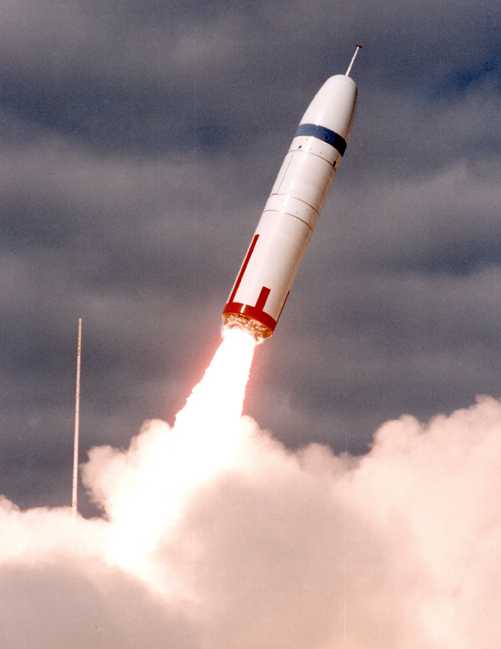|
Using advanced technology in propellants,
micro-electronics and new weight-saving materials, the Trident I C4 missile
incorporated the multiple independently-targeted vehicle capability of
its predecessor Poseidon and provided a range of more than 4,000 nautical
miles with a full payload.
|

Trident C4 Missile fired at a test range
Note the "aerospike" on the nose of the
missile. This is extended after the missile is fired and makes the
missile appear aerodynamically longer, thus increasing its stability and
range.
Photograph copyrighted by Lockheed-Martin
Missile and Space
|

A montage of seven views showing the launching
of a Trident I C-4 missile in October 1981 from the submerged submarine
USS Francis Scott Key SSBN-657 and the Trident's re-entry bodies as they
plunge into the earth's atmosphere and then into the Atlantic Ocean
U.S. Navy Photograph No. DN-SC-82-00005
|
|
Picture
comparing Poseidon C-3 and Trident I C-4
The Poseidon is on the left and the Trident
is on the right
In the foreground is a model of USS Ulysses
S. Grant SSBN-631
U.S. Navy Photograph No. DN-SC-82-00006
|

